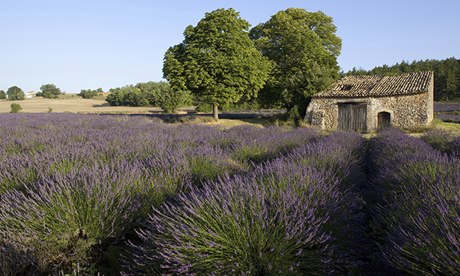Deep below the once purple but now wintering and dormant fields of Provençal lavender, something is rotten.
It will not make itself known until spring and summer, when the cicadas – another symbol of this picturesque region of southern France – are ready to emerge from the sun-warmed earth. And then it will be too late. Hundreds of thousands of cicada larvae will not only have devastated the plants' roots, but the adult insects will also transmit a fatal micro-bacterium that will make the plants slowly wither and die.
Now locals, whose livelihoods depend on the plants, are appealing for funds to save the lavender that has been produced in the region since the Middle Ages.
Producers say that between 2007 and 2010 the region's production of the most popular plant, lavandin, used in soaps, perfumes, insect repellents, essential oils and the celebrated herbes de Provence – has halved.
The culprit is a mini cicada called a cicadelle which French lavender producers believe has proliferated because of hotter, drier summers, blamed on global warming. The cicadelle lays its eggs several centimetres below the plants. Not only do the young insects feed on the roots; the adult insects that emerge feed on the plants, both transmitting what scientists know as the stolbur phytoplasma.
There are around 30 types of lavender, producing flowers of varying colours including purple, pink and white. The most widely grown is lavandin, a hybrid. France has 1,700 lavender producers working 16,000 hectares of lavandin, along with another 4,000 hectares of strictly controlled "pure" lavender. The lavender industry sustains an estimated 10,000 jobs.
"The cicada are difficult to deal with because we can't find a way to kill the larvae in the ground and we can't use pesticides because a lot of bee-keepers bring their hives near our fields during flowering," said Eric Chaisse of the Provence regional centre for experimentation on plants used in perfumes, aromas and medicines.
"It's hard to imagine Provence without lavender, but if we don't get on top of this, the lavender will disappear in 20 to 30 years," he added.
Scientists are now looking for lavender varieties resistant to the micro-bacterium.
"It's very depressing and financially ruinous for lavender producers to cultivate plants that are supposed to last 10 years and find them dying within three years," said Chaisse. "Quite apart from the loss of income and jobs in producing lavender, there is also the tourist industry. People often come to Provence just to see the lavender."

